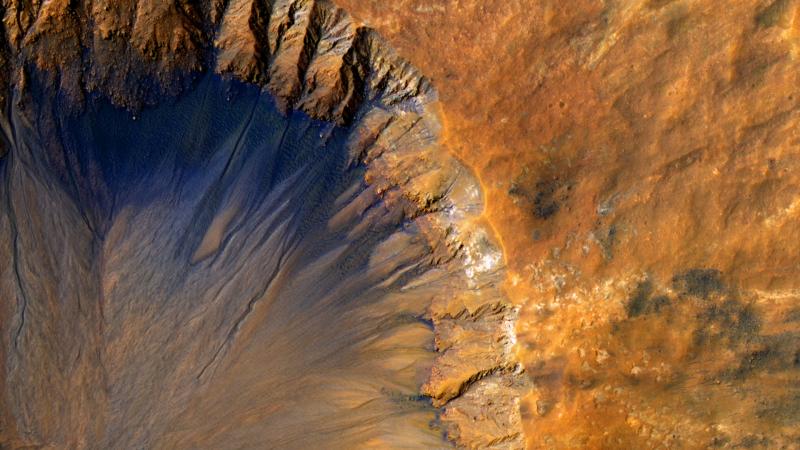
Using space-borne remote sensing instruments, scientists from Indian Institute of Technology Bombay (IITB) have detected evidence for hydrous and hydrated minerals on the Martian surface. An excess of such minerals were found associated with impact craters on Mars and could be a result of either pre-existing ancient hydrothermal systems or hydrothermal systems that were created due to the impact by meteors, asteroids and comets.
Hydrous and hydrated mineral are those which have undergone changes to their crystal structure due to the addition of water. The presence of such mineral often points to presence of liquid water or hydrothermal systems driven by fluids and varying temperature.
In their study, the researchers focussed on impact induced hydrothermalism or hydrothermal systems that could have originated due to an impact. They detected and mapped the hydrous and hydrated minerals using orbital imaging spectroscopic, high-resolution panchromatic and digital elevation data. They also found craters with evidence for impact-induced hydrothermalism on the red-planet.
The study identified mineral assemblages of phyllosilicates such as smectites, kaolinites, prehnites, chlorites, and mica, and some tectosilicates such as hydrated silica. The most common minerals found were chlorites, Fe/Mg smectites, with a few instances of prehnite, which the researchers attribute to sub-surface alteration. Aluminium phyllosilicates were also commonly observed, suggesting near-surface liquid water activity for extended periods.
Using the data obtained from the hydrated minerals and the hydrothermal alterations, the researchers could further probe the nature of the circulating hydrothermal fluids, including the fluid to rock ratio and its pH. The researchers could also not identify any spatial patterns in the distribution of these minerals. They believe that these impact-induced hydrothermal systems may suggest local events, which are limited within individual craters.
Apart from adding more evidence to the theory of liquid water having existed on the Martian surface, the study also identifies the role of imaging spectroscopy and space based remote sensing in identifying hydrated and hydrous minerals on the red planet.






